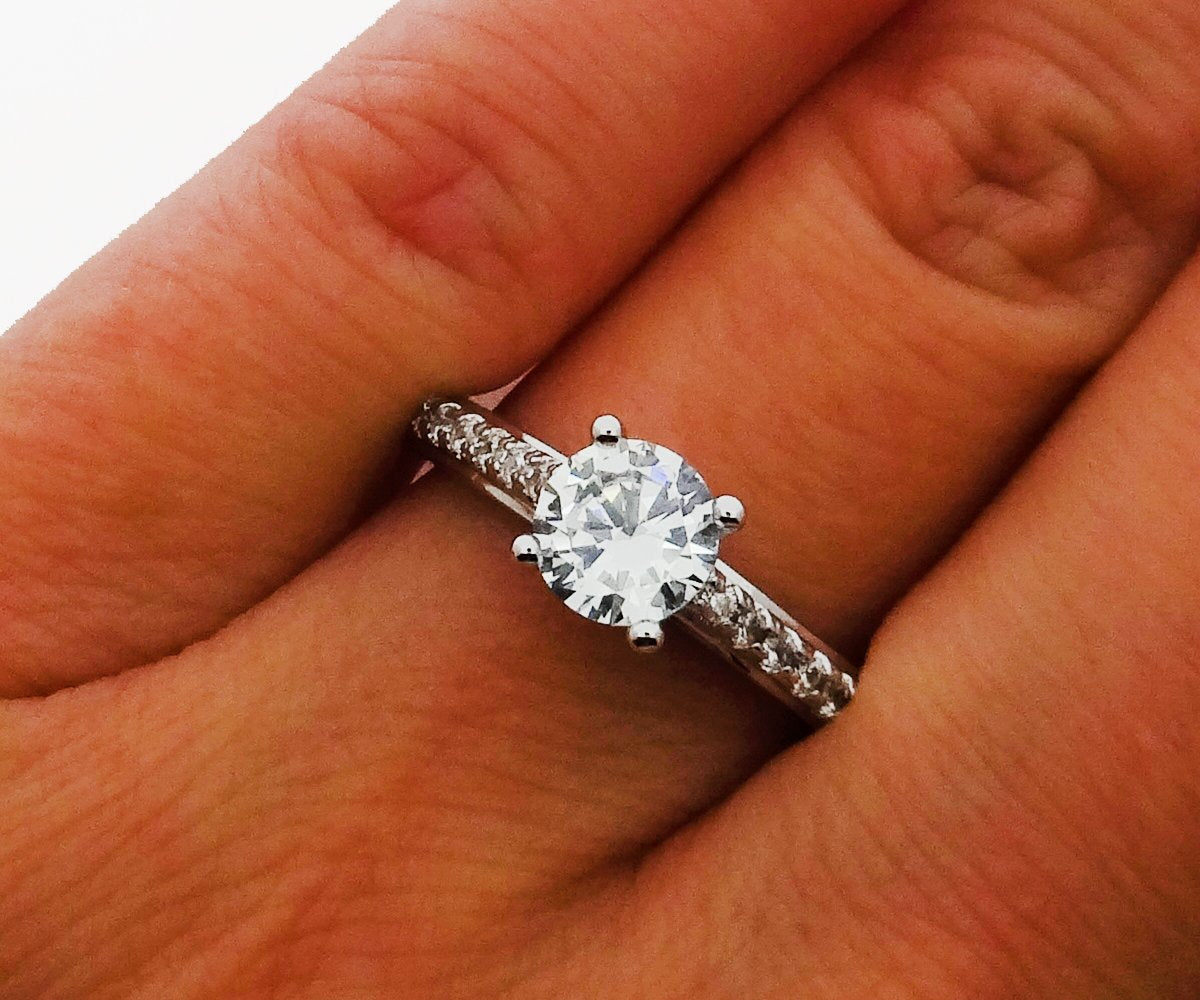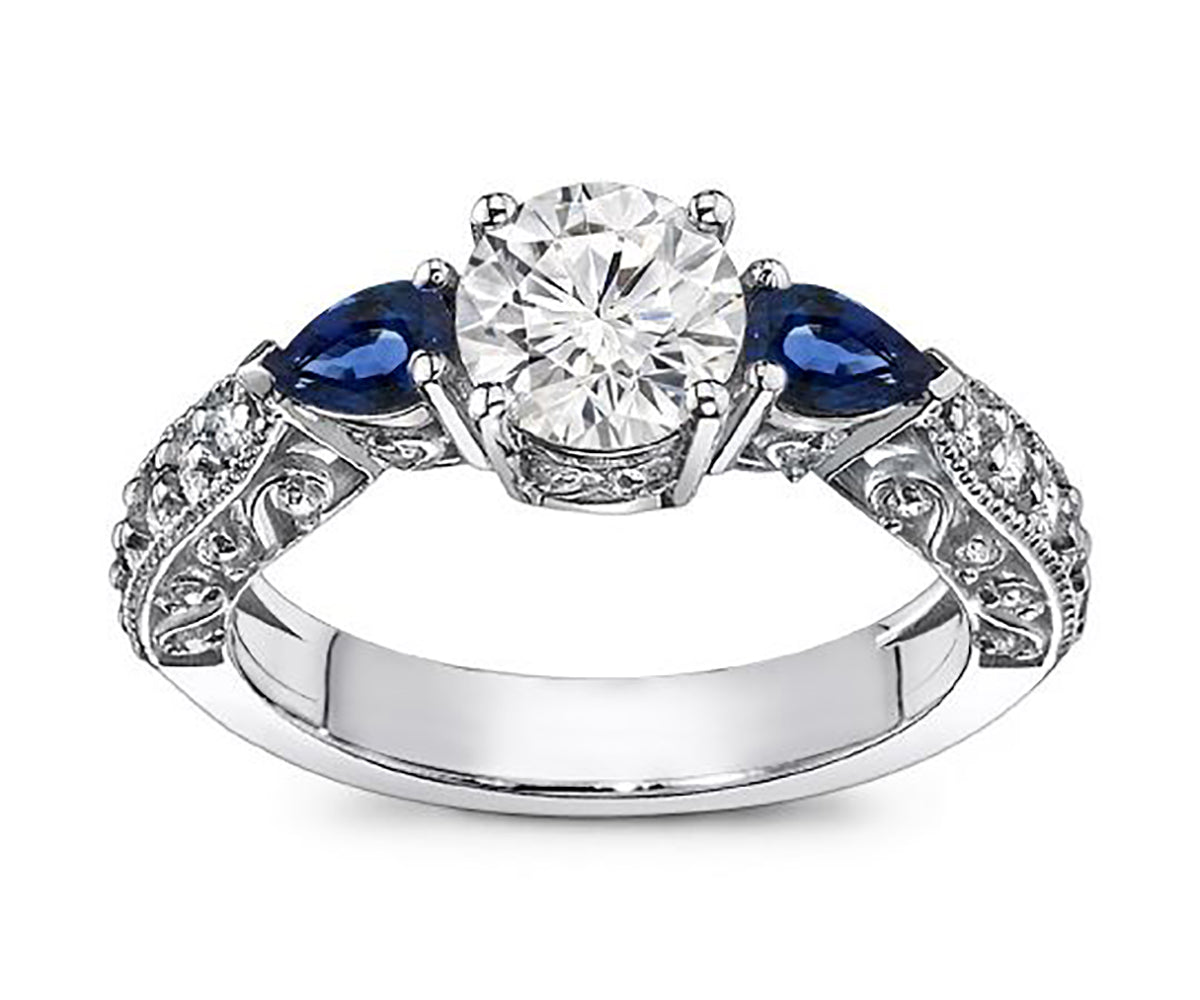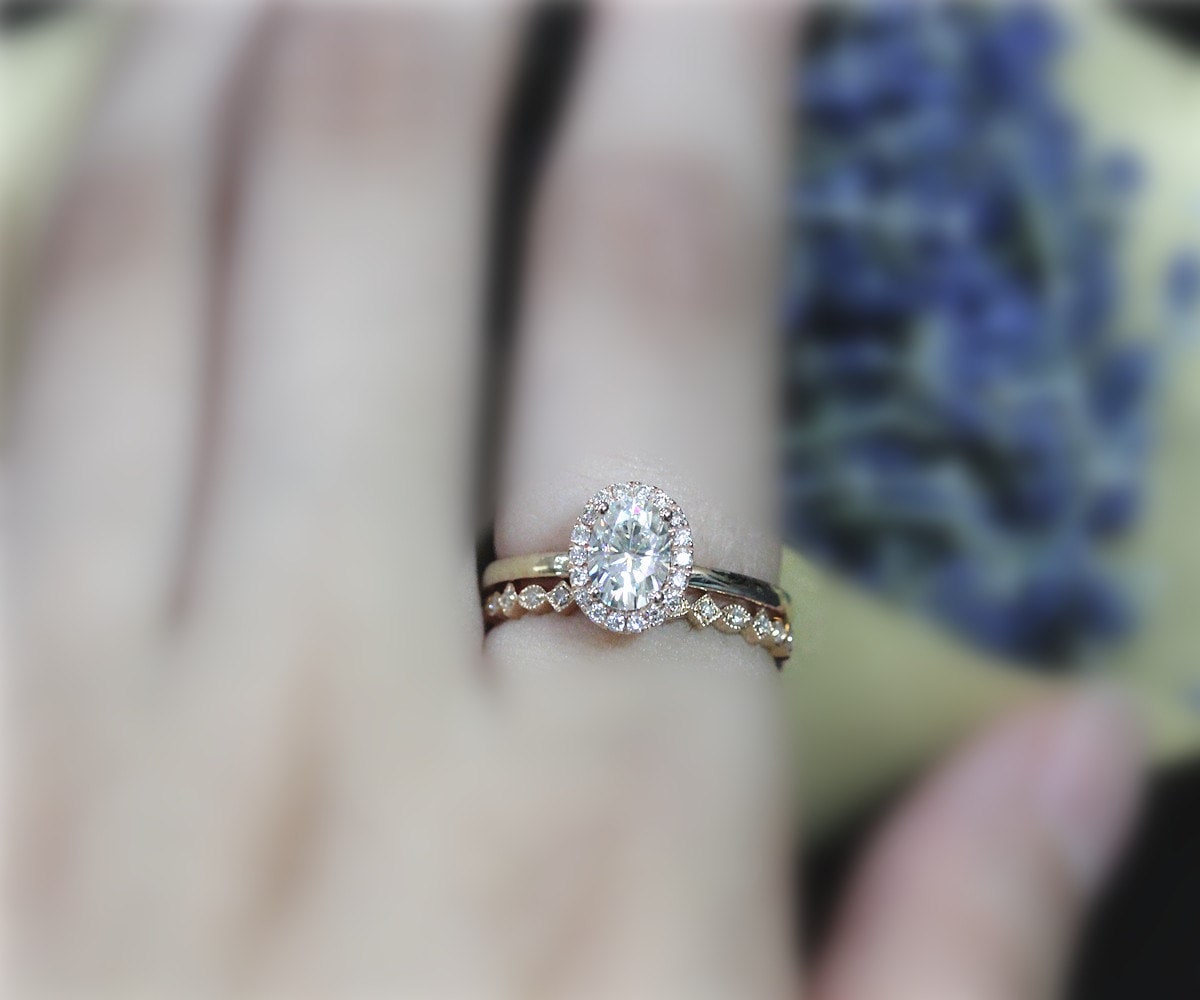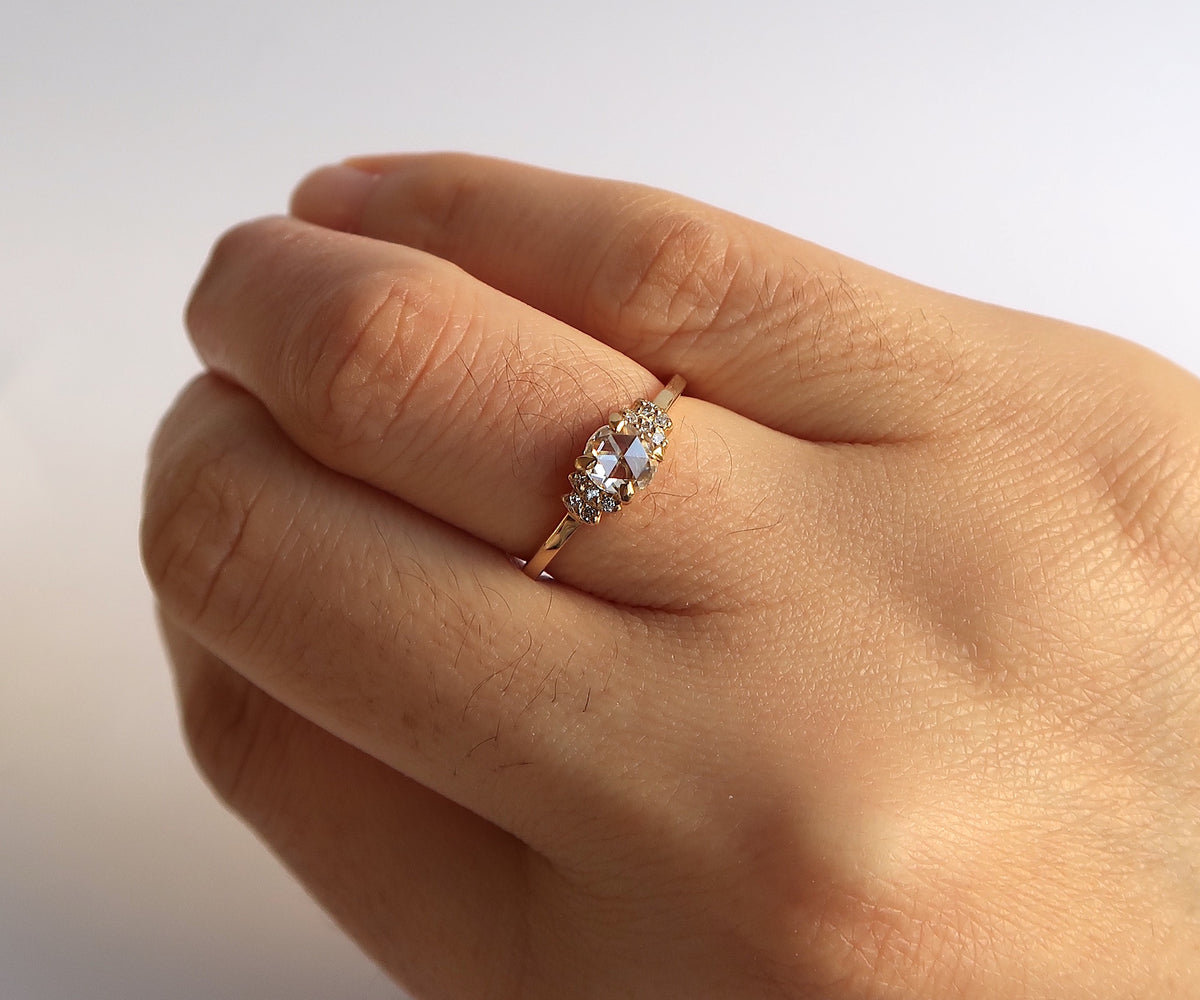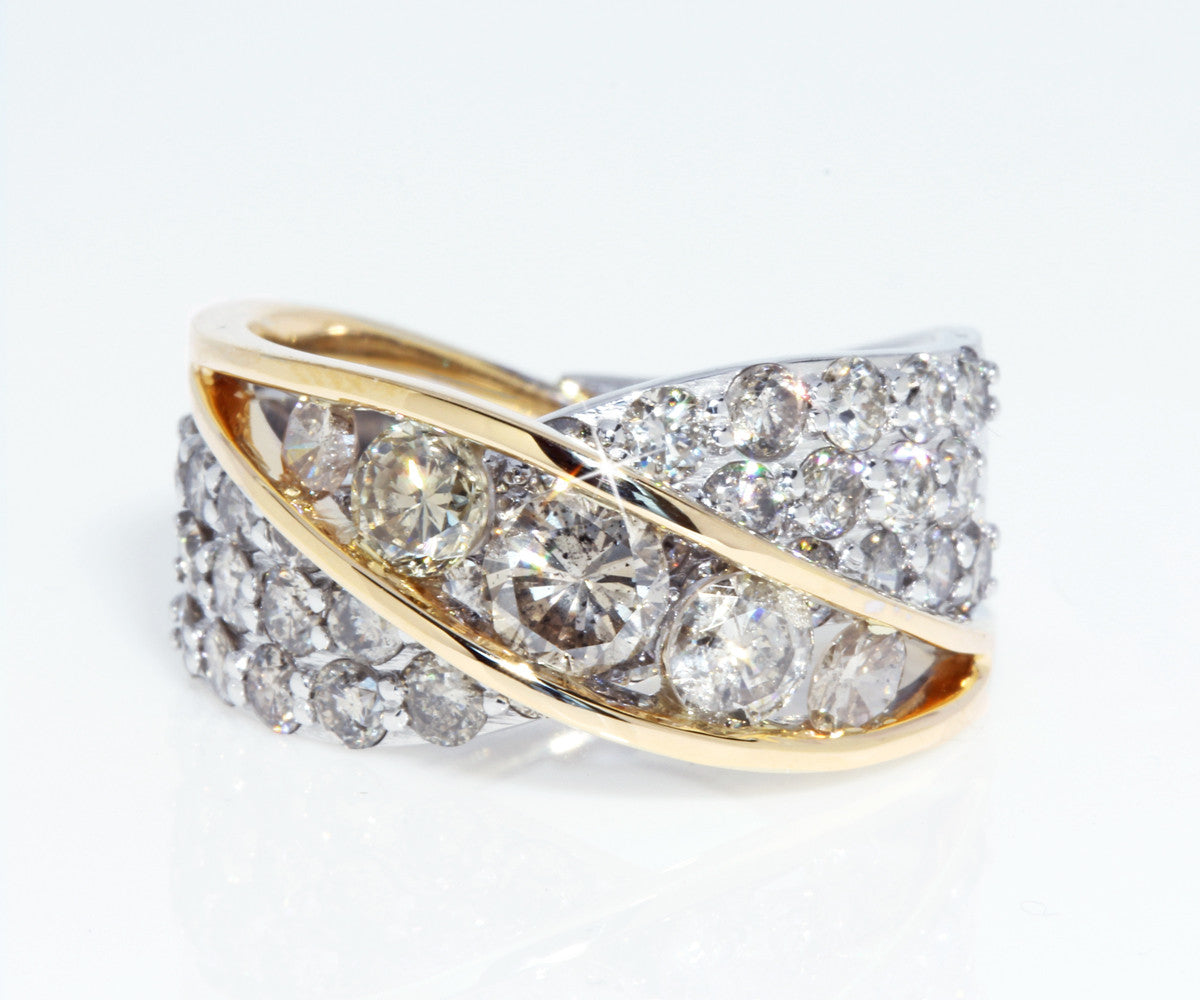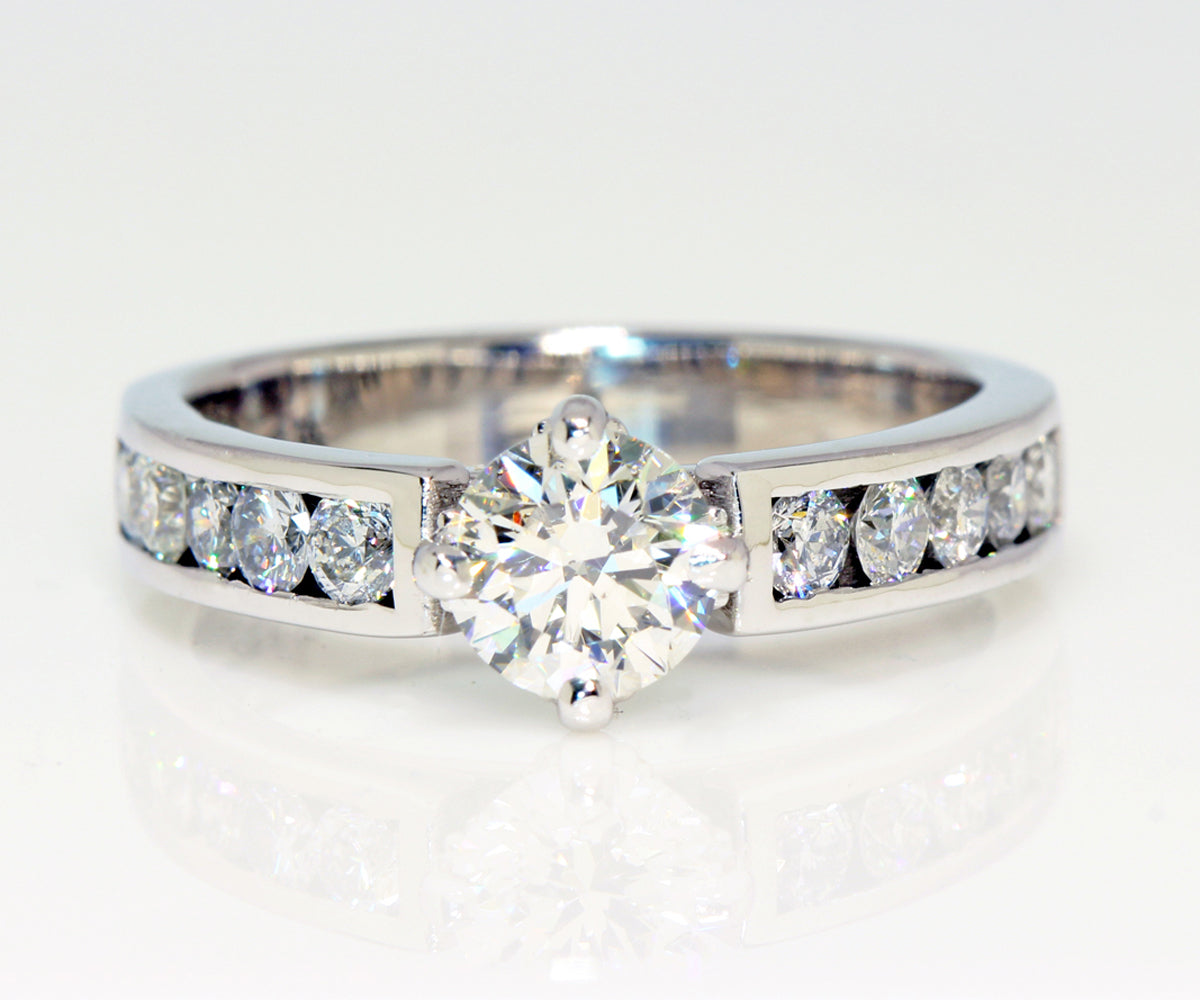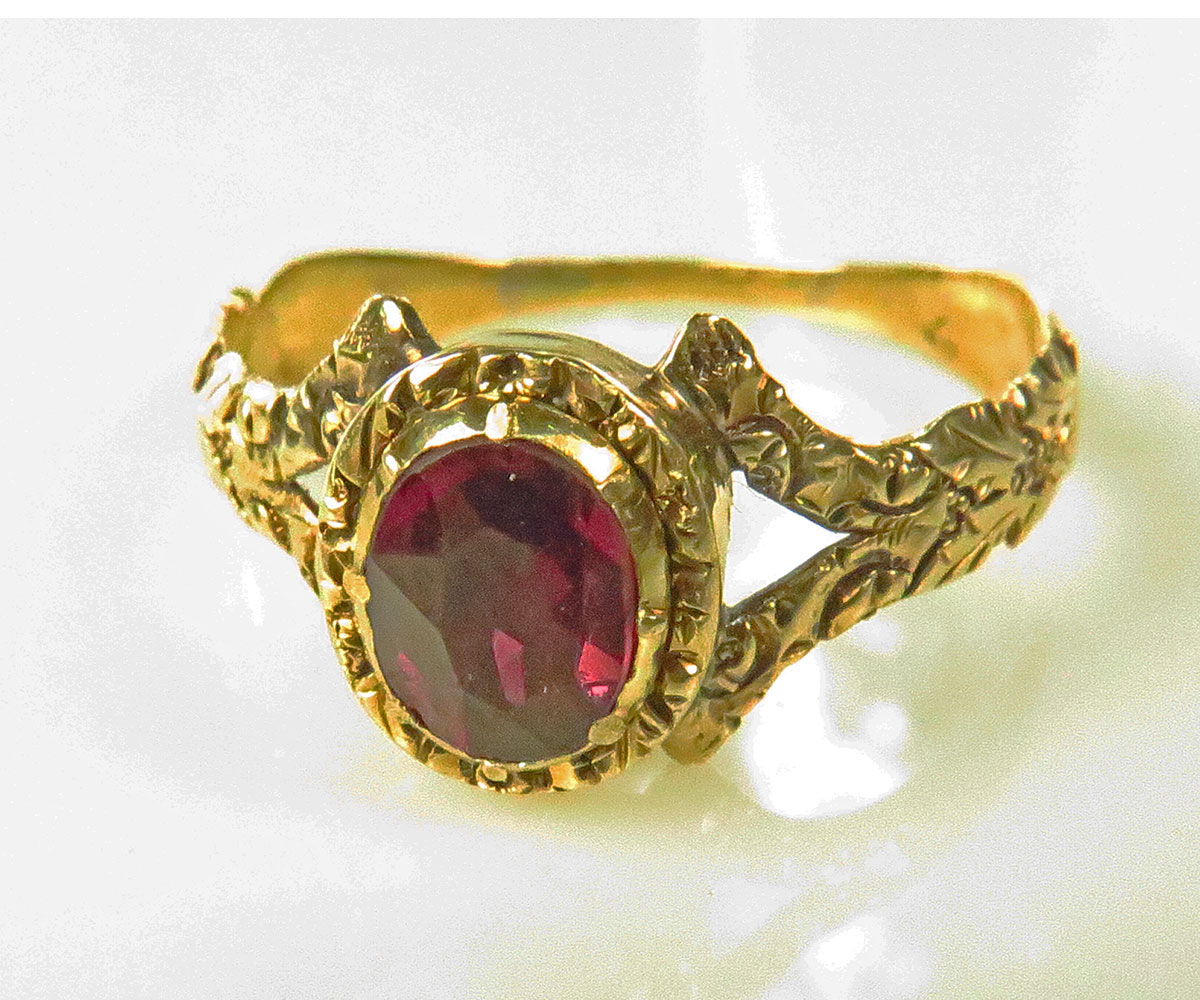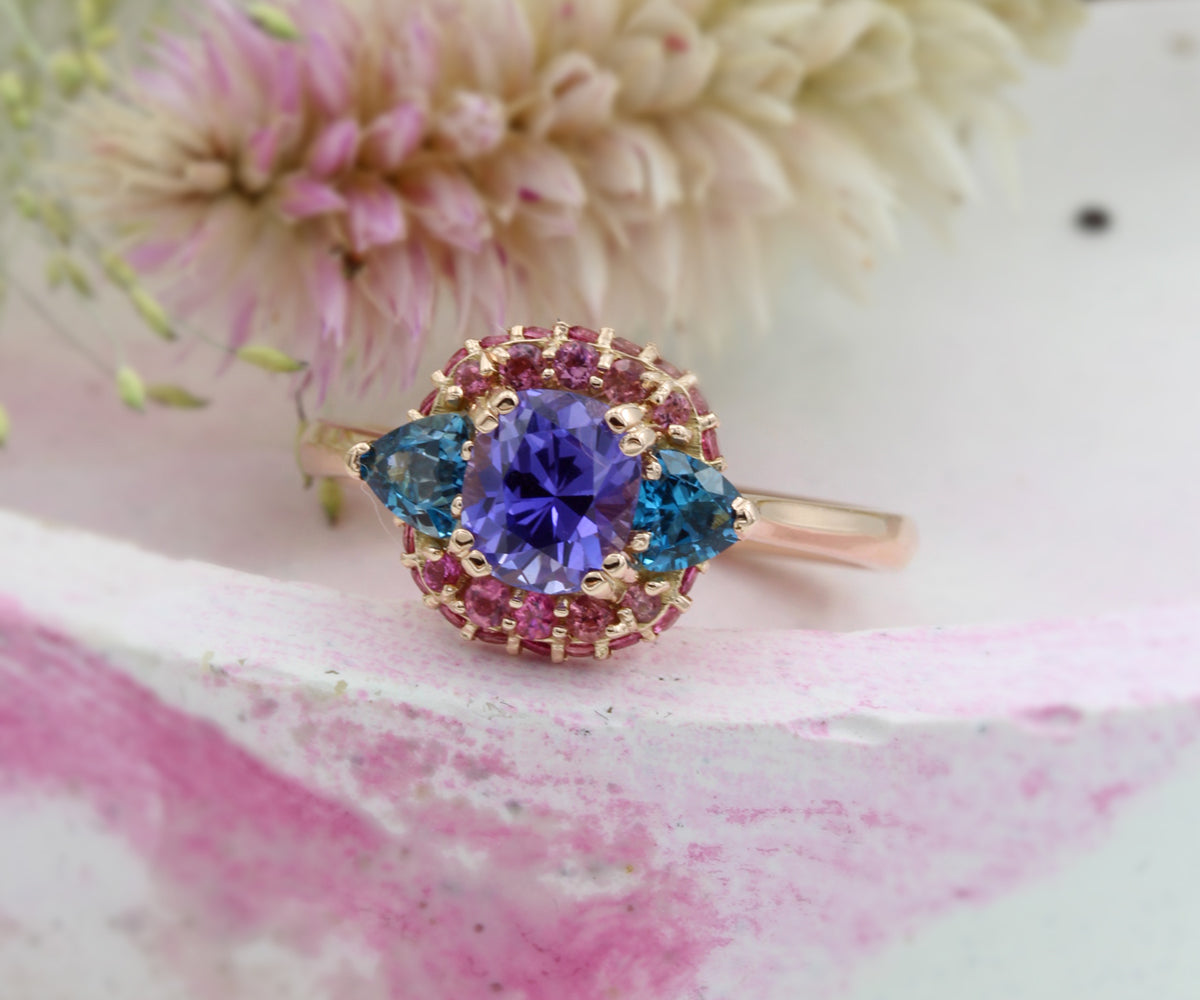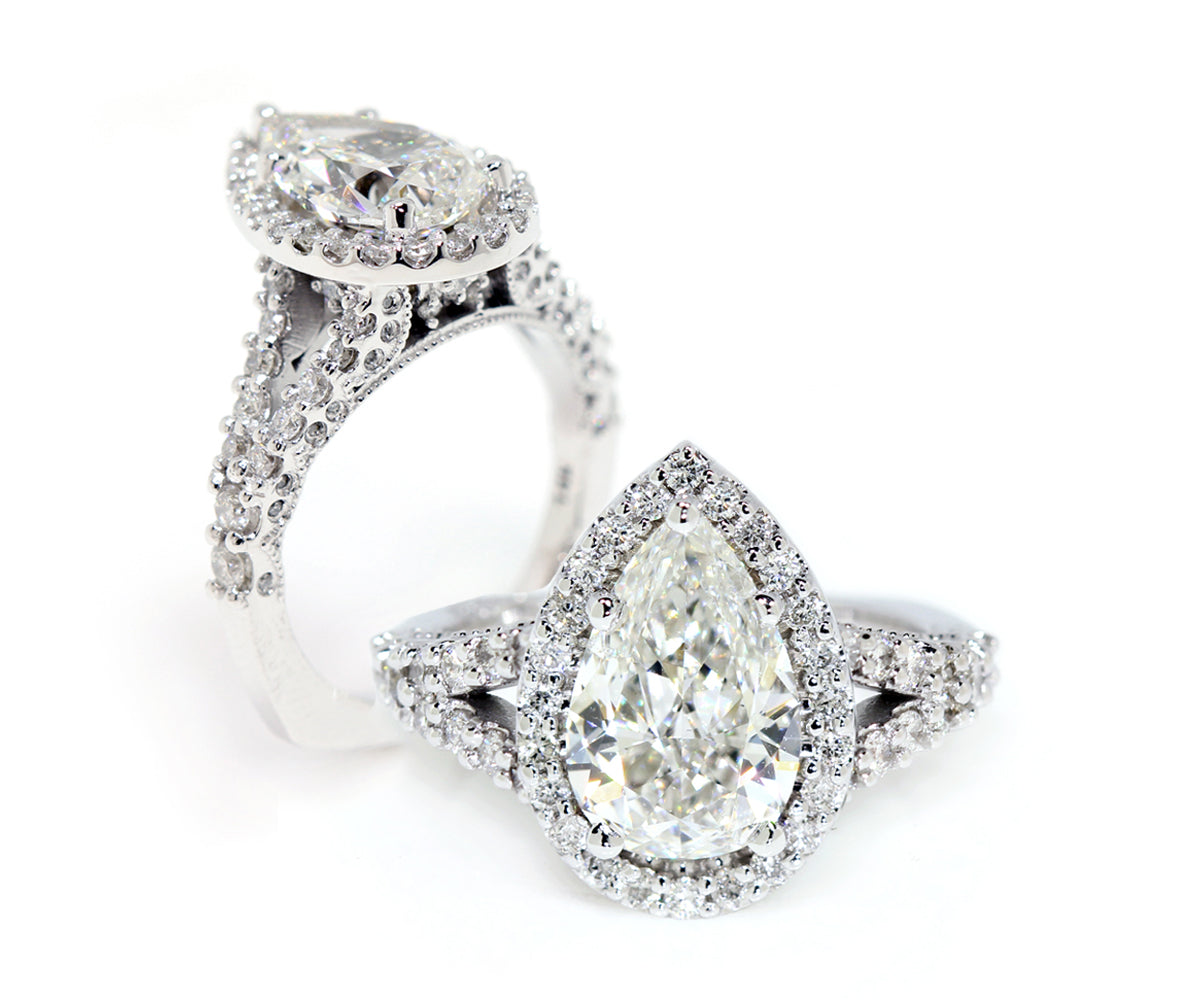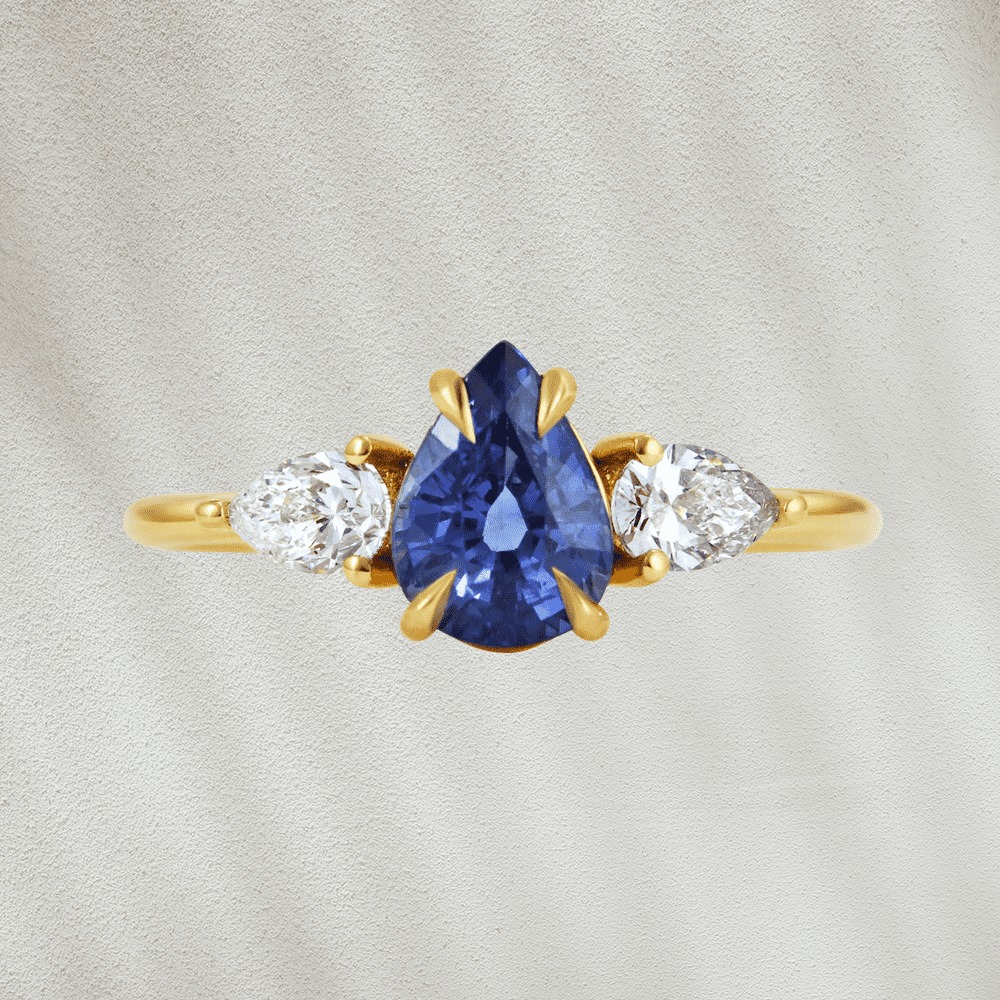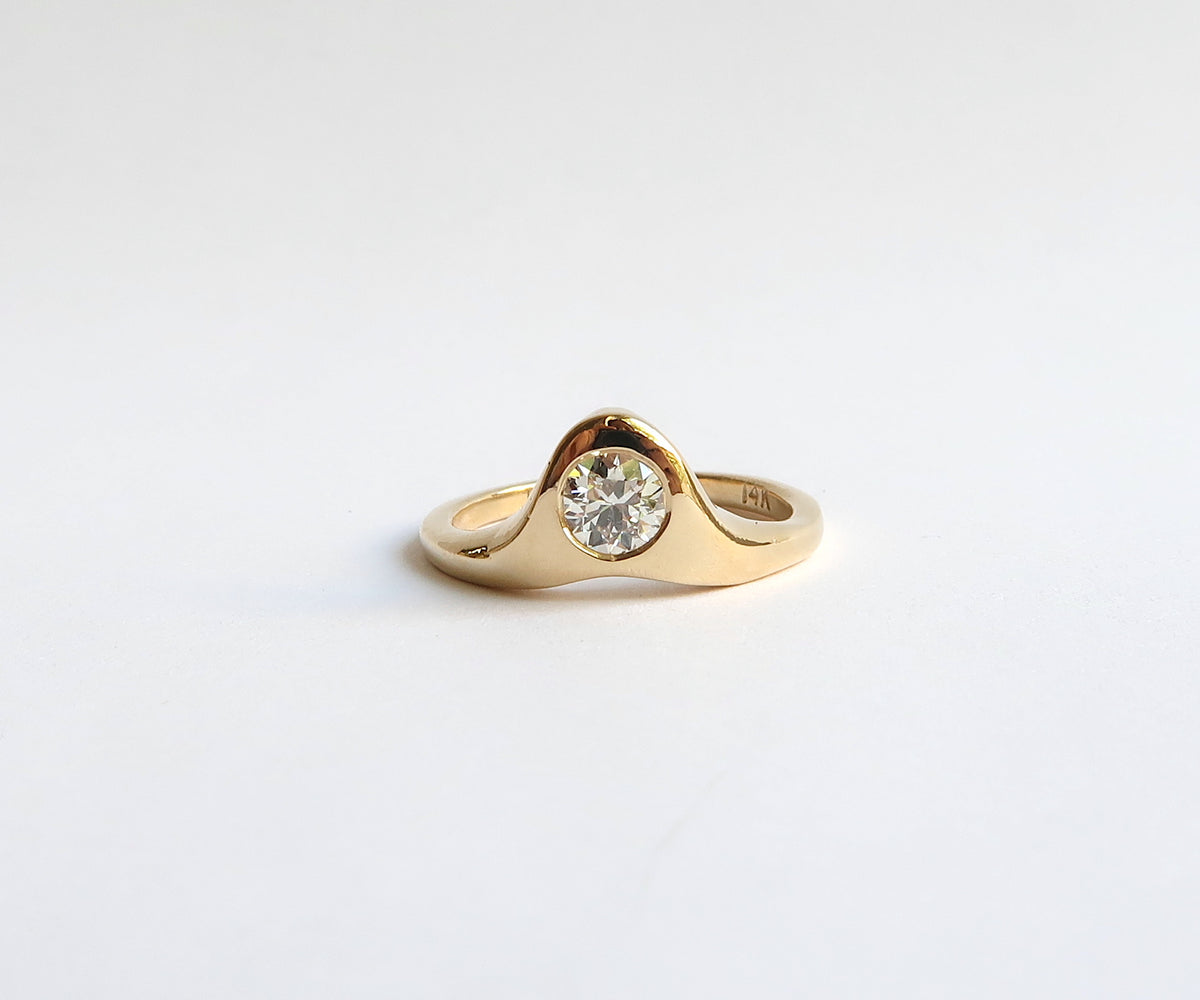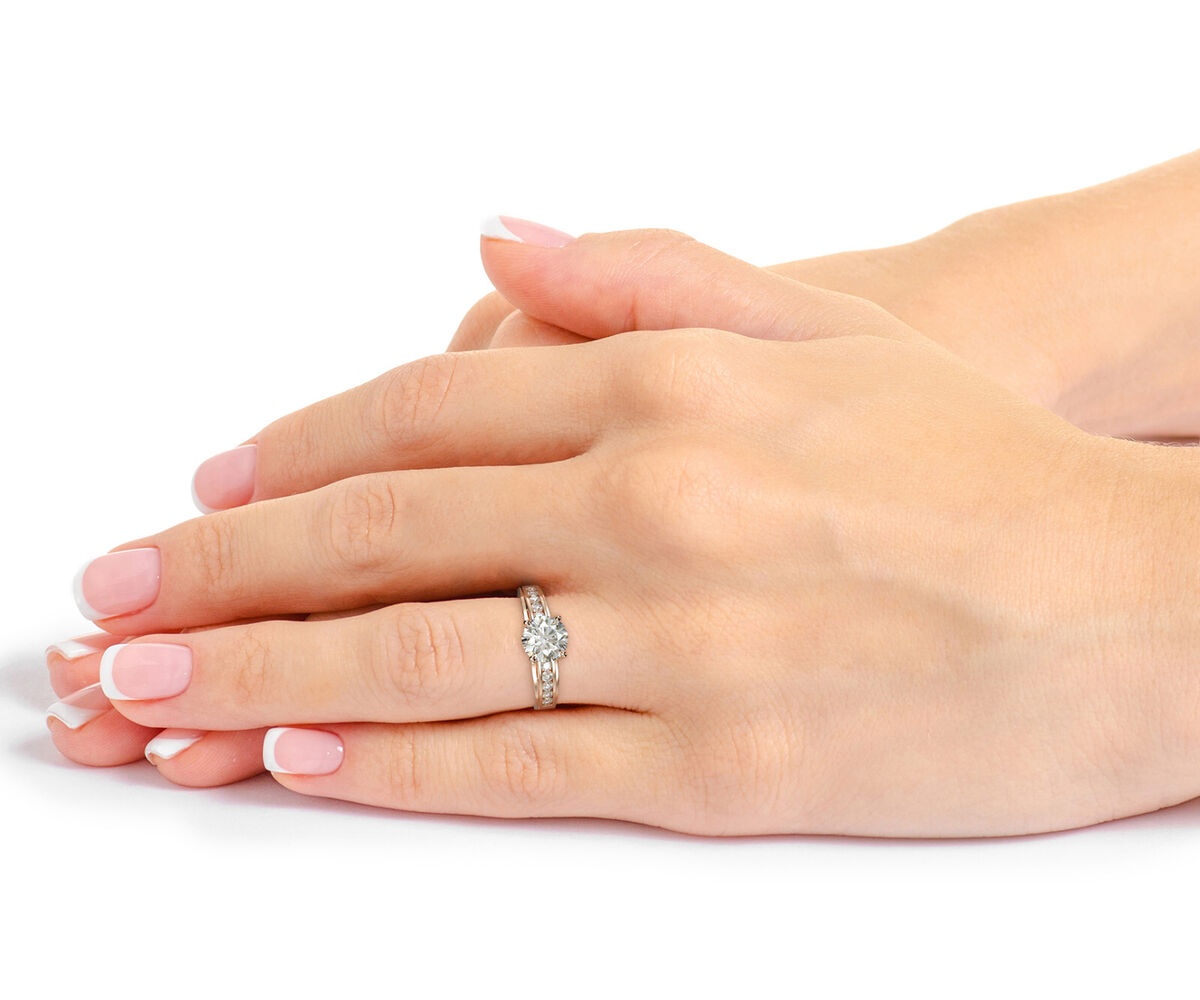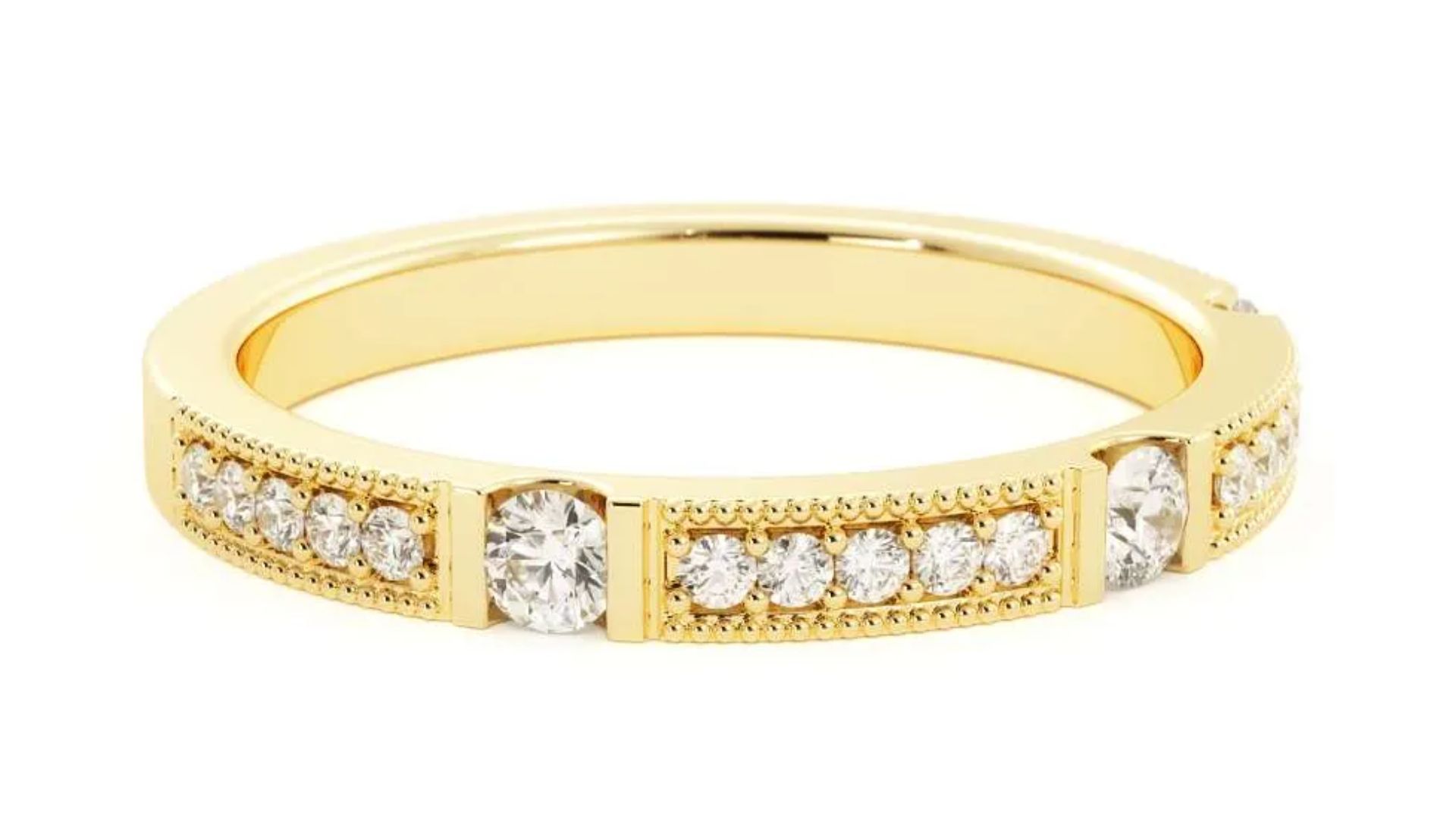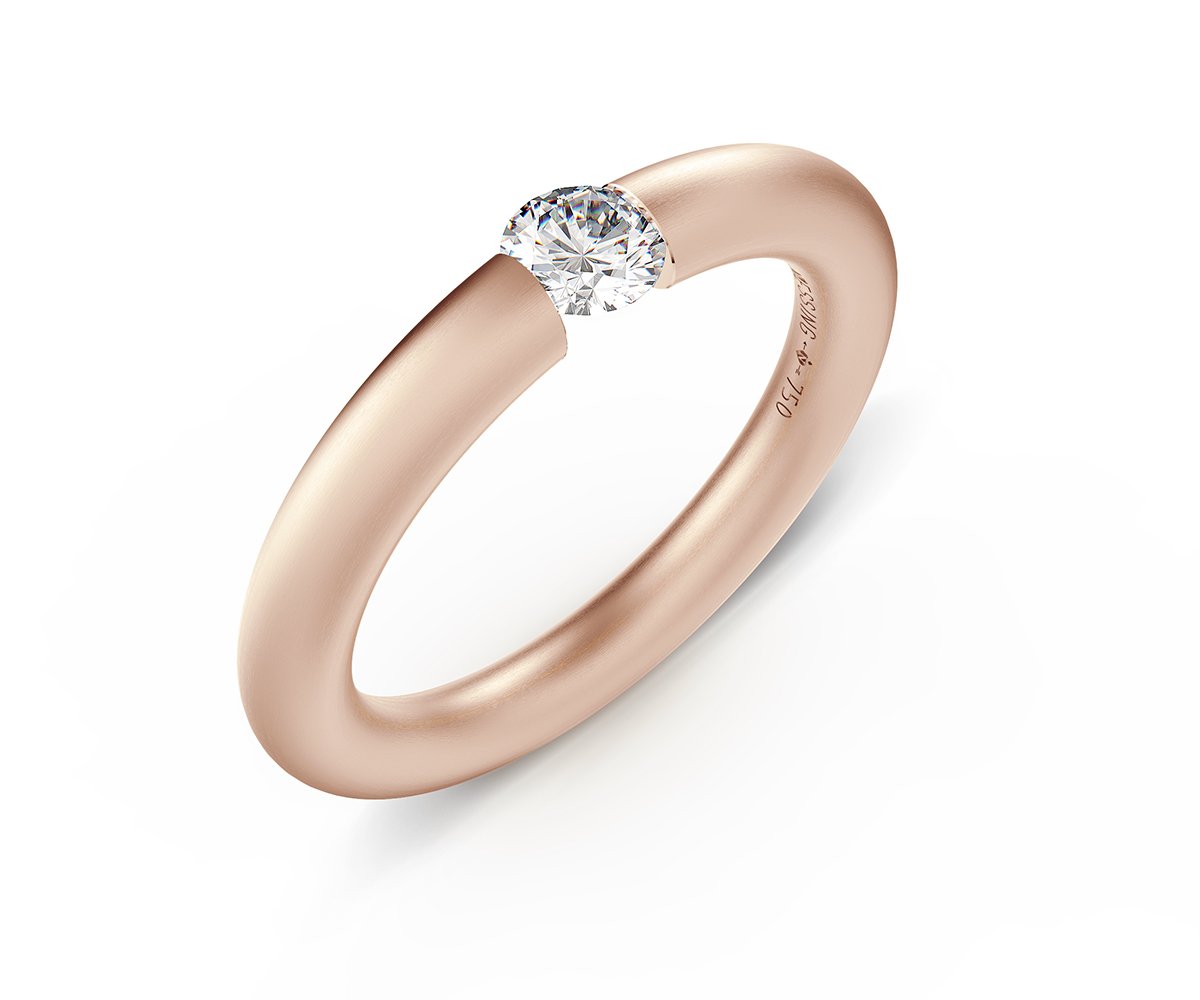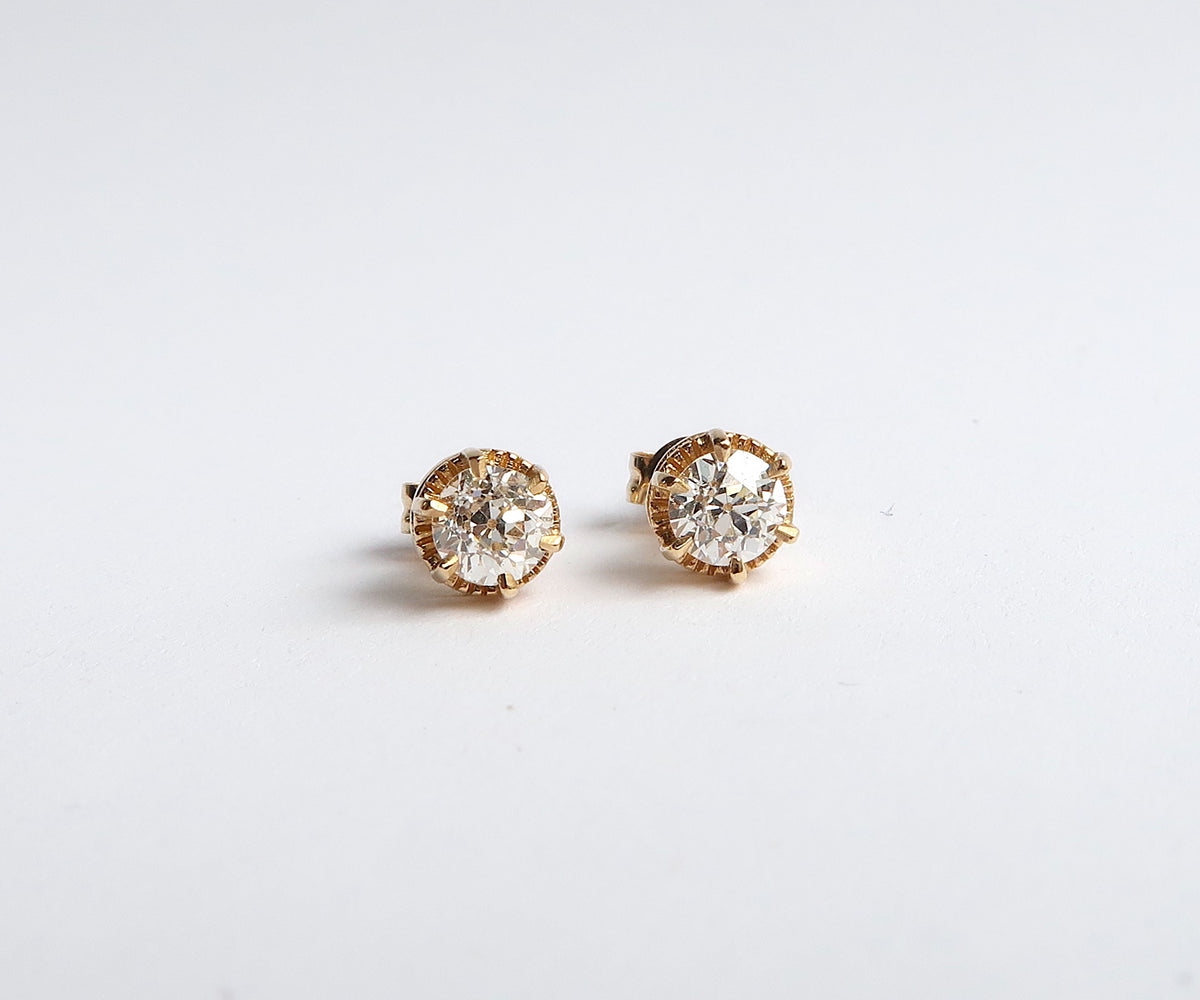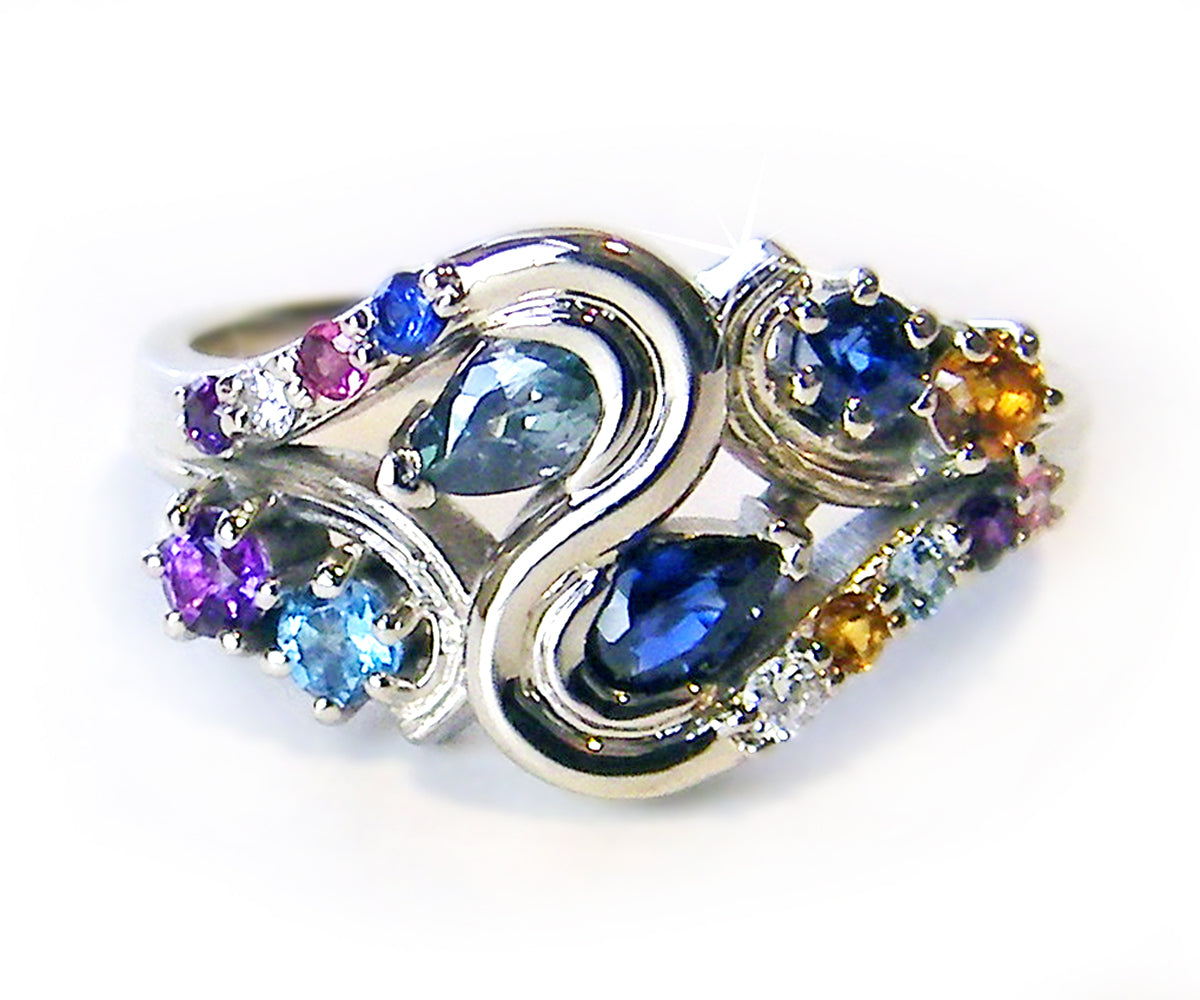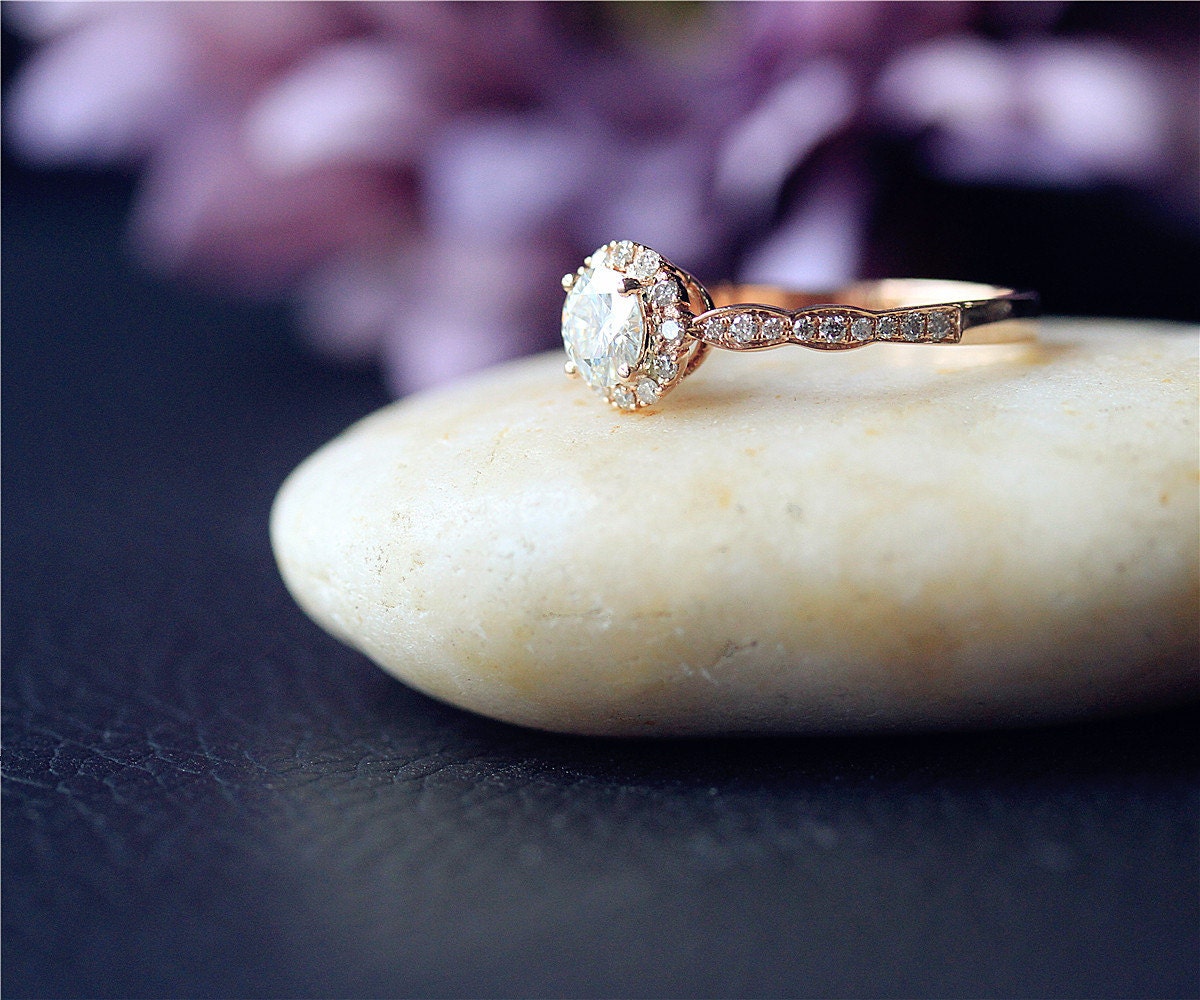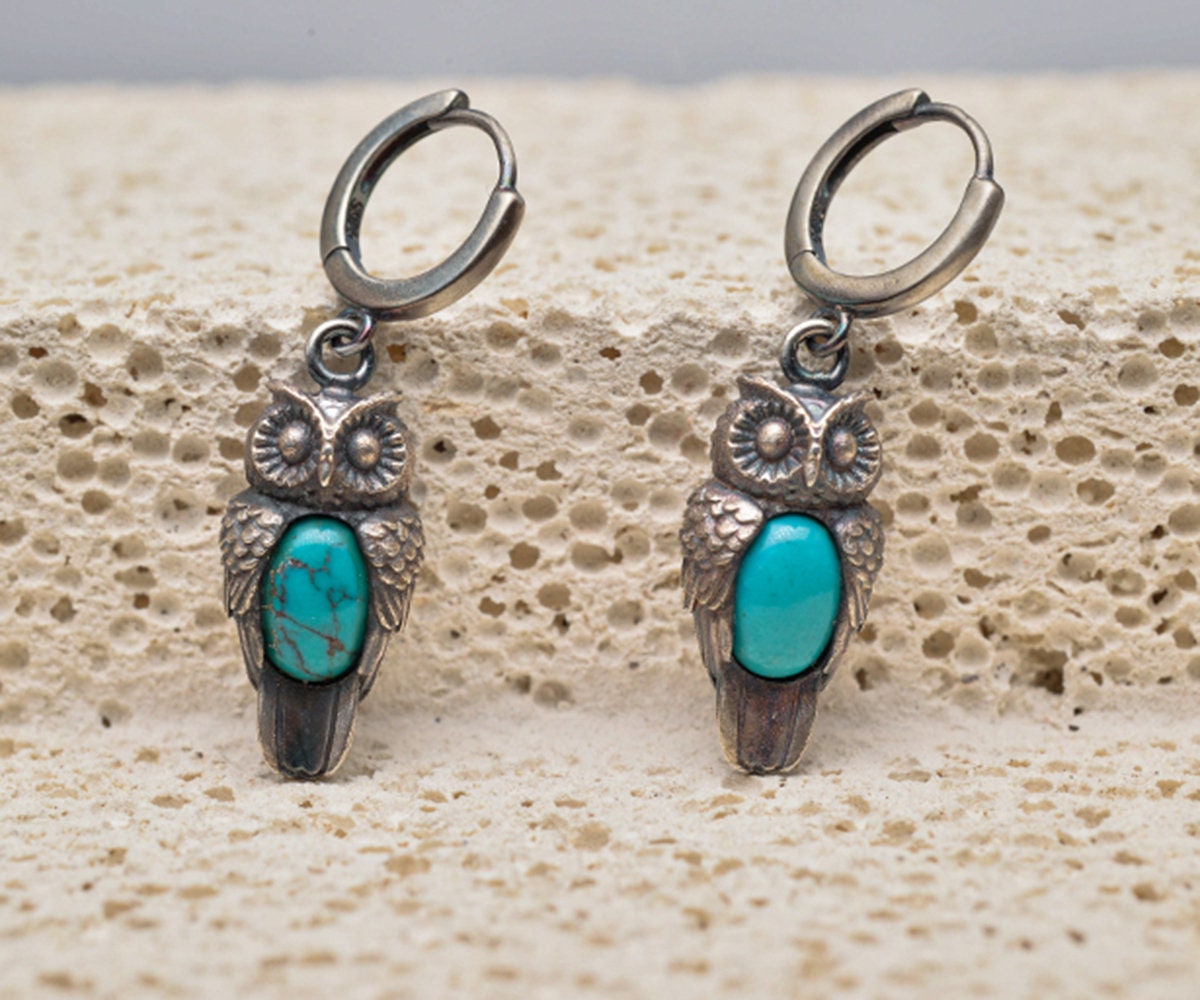Engagement rings hold a special place in the hearts of couples around the world. They are a tangible representation of love, commitment, and the promise of a future together. While the concept of engagement rings has evolved over the centuries, their core meaning remains unchanged.
They serve as a symbol of a couple's intention to marry and their enduring love for each other. The engagement ring is a symbol of love and commitment, and there are countless designs to choose from. Among the plethora of engagement ring designs available, side stone engagement ringsstand out as a choice that effortlessly marries elegance with brilliance.
Three-stone engagement rings are more than just beautiful, they symbolize and personalize. The three stones symbolize the past, present, and future of a relationship, but they may also signify friendship, love, faithfulness, or religion. For a meaningful ring, a three-stone engagement ring should be your first choice.
These rings feature a dazzling center stone, typically a diamond or gemstone, flanked by smaller accent stones on either side, enhancing the ring's overall allure. For people who adore sparkle, a side stone diamond engagement ring is the ideal option. It has clusters of diamonds extending along the metal band to highlight the center stone.
A Brief History Of Engagement Rings
The history of side stone engagement rings can be traced back to the romantic and intricate designs of the Victorian era. It was during this period, in the 19th century, that these rings first gained popularity.
Victorians were known for their fondness for symbolism, and the three-stone ring, a classic side stone design, became emblematic of the past, present, and future of a couple's love. These rings often featured colorful gemstones and diamonds, each representing different facets of the relationship.
Over time, side stone engagement rings evolved in design, incorporating various gemstones and settings, but they have always retained their essence of elegance and meaningful symbolism. Today, they continue to be cherished as timeless expressions of enduring love and commitment.
Ancient Beginnings - From Betrothal Rings To Promise Rings
The roots of engagement rings can be traced back to ancient civilizations, where they took various forms. In ancient Egypt, rings made from materials like leather and hemp were exchanged as tokens of love and commitment. These early rings often featured intricate designs and were worn on the fourth finger of the left hand, a practice believed to be connected to the "vena amoris," or the "vein of love," that runs directly to the heart.
Similarly, ancient Romans gave "betrothal rings" as a promise of future marriage. These rings were typically made of iron, symbolizing the strength of the commitment. Over time, the materials and designs of these rings evolved, with some incorporating gemstones or precious metals.
The Emergence Of Diamond Engagement Rings
The concept of diamond engagement rings as we know them today can be attributed to a significant discovery in the 15th century. During this period, diamonds were being mined in India, and their rarity and brilliance captured the attention of European royalty and aristocracy. As the demand for diamonds grew, they began to feature in engagement rings.
In 1477, Archduke Maximilian of Austria presented Mary of Burgundy with a diamond engagement ring, marking the first recorded use of a diamond in this context. This gesture is often cited as the origin of the diamond engagement ring tradition. Diamonds were celebrated not only for their beauty but also for their durability and symbolism of eternal love.
The De Beers Effect - Shaping Modern Engagement Rings
The modern engagement ring landscape was significantly influenced by De Beers, a diamond mining and trading company founded in the late 19th century. De Beers launched a groundbreaking marketing campaign in the mid-20th century with the famous slogan, "A Diamond Is Forever." This campaign aimed to associate diamonds with lasting love and commitment, solidifying the diamond engagement ring as a cultural norm.
During this time, the classic solitaire diamond engagement ring emerged as a dominant style, featuring a single diamond as the focal point. However, variations like halo settings, three-stone rings, and side stone rings soon gained popularity, offering couples more choices to express their unique love stories.
Beyond Diamonds - Diverse Gemstone Engagement Rings
While diamonds remain a popular choice for engagement rings, the 21st century has witnessed a growing trend in using colored gemstones. These stones, with their vibrant hues and individual meanings, allow couples to infuse their rings with personal significance.
Sapphires, with their deep blue color, symbolize loyalty and fidelity, making them a meaningful alternative to diamonds. Rubies represent love and passion, while emeralds are associated with growth and harmony. The resurgence of colored gemstones reflects a desire for more personalized and unique engagement rings.
The Anatomy Of A Side Stone Engagement Rings
A side stone engagement ring typically consists of several key elements:
Center Stone
This is the focal point of the ring and is usually a larger diamond or gemstone. It represents the heart of the relationship and is often the most eye-catching feature of the ring.
Side Stones
These are smaller diamonds or gemstones that flank the center stone on either side. Side stones are strategically placed to enhance the brilliance and overall appearance of the ring.
Setting
The setting is the metal framework that holds the center stone and side stones in place. It can vary in design and style, adding character to the ring.
Band
The band is the circular part of the ring that encircles the finger. It can be made from various metals, such as white gold, yellow gold, rose gold, platinum, or a combination of metals.
The Significance Of Side Stone Engagement Rings
Side stones play a crucial role in the overall aesthetics and symbolism of an engagement ring. Here are some key reasons why they are a popular choice:
Enhanced Brilliance
Side stones add extra sparkle and brilliance to the ring, making it more eye-catching and luxurious.
Symbolism
The arrangement of side stones can convey special meanings. For example, three-stone rings often symbolize the past, present, and future of the relationship.
Customization
Side stones allow for customization, as couples can choose the type of gemstones and their arrangement to suit their preferences and personal symbolism.
Balance And Proportion
Side stones can help balance the visual weight of the center stone, especially if it is a large diamond or gemstone. They create a sense of symmetry and harmony in the design.
Popular Styles Of Side Stone Engagement Rings
Side stone engagement rings come in a wide variety of styles to suit different tastes and preferences. Here are some popular styles:
Halo Rings
Feature a center stone surrounded by a halo of smaller diamonds or gemstones. The halo adds extra sparkle and creates a stunning, vintage-inspired look. Halos can be single or double, with one or more rows of stones.
Pave Rings
Have small diamonds set closely together on the band, creating a paved appearance. The center stone takes center stage, while the pave stones add continuous sparkle to the ring. Pave settings can cover part or the entire band.
Channel-Set Rings
Feature side stones set into a channel or groove on the band. The stones are set flush with the metal, creating a smooth and sleek look. Popular for its modern and clean aesthetic.
Vintage And Antique Styles
Inspired by designs from the past. Often feature intricate details, filigree work, and unique stone shapes. Perfect for couples who appreciate vintage aesthetics.
Colored Gemstone Side Stones
Instead of diamonds, colored gemstones like sapphires, emeralds, or rubies are used as side stones. Add a pop of color and personalization to the ring. Can be chosen to represent birthstones or have special significance.
Unique And Custom Designs
Couples can work with jewelers to create custom side stone engagement rings. Allows for complete personalization of the ring, including the choice of stones, setting, and design elements.
Setting Options For Side Stone Engagement Rings
The setting of a side stone engagement ring not only secures the stones but also contributes to the overall design and durability of the ring. Here are some common setting options:
Prong Setting
Prongs are small metal claws that hold the stones in place. Allows for maximum light exposure, enhancing the brilliance of the stones. Four-prong and six-prong settings are common choices.
Bezel Setting
Metal encircles the entire circumference of the stone, holding it securely. Offers excellent protection for the stone and a sleek, contemporary look.
Channel Setting
Side stones are set into a channel or groove in the band. Provides a secure and smooth setting with no protruding prongs.
Bar Setting
Similar to a channel setting, but with metal bars separating the stones. Adds a unique and decorative touch to the ring.
Tension Setting
The center stone appears to float between the two sides of the band. Achieves a modern and minimalist look while securely holding the stone.
Selecting The Right Gemstones For Side Stone Engagement Rings
While diamonds are the most popular choice for center stones in engagement rings, side stones offer an opportunity to incorporate a variety of gemstones. Here are some options to consider:
Diamonds
Classic, timeless, and renowned for their brilliance. Can be colorless or have varying degrees of color, known as fancy color diamonds. Often chosen for their durability and ability to complement any center stone.
Colored Gemstones
Sapphires, emeralds, rubies, and other colored gemstones add a pop of color and personality to the ring. Each gemstone carries its own symbolism and significance. Can represent birthstones or have personal meaning to the couple.
Moissanite
A popular diamond alternative is known for its brilliance and affordability. Nearly as hard as diamonds and highly durable. Offers excellent value for budget-conscious couples
Other Gemstones
Gemstones like aquamarine, morganite, and tanzanite are also used as side stones, offering a wide range of color options.
Care And Maintenance Of Side Stone Engagement Rings
To ensure the longevity and beauty of your side stone engagement ring, proper care and maintenance are essential. Here are some tips:
Regular Cleaning
Clean your ring regularly using mild soap, warm water, and a soft brush. Avoid harsh chemicals and ultrasonic cleaners, especially for delicate gemstones.
Prong Inspection
Periodically check the prongs or settings to ensure that they are secure and in good condition. Loose or damaged prongs can lead to stone loss.
Professional Inspection
Have your ring inspected by a professional jeweler at least once a year to assess the condition of the setting and stones.
Safe Storage
When you're not wearing your ring, store it in a soft pouch or a jewelry box to prevent scratches and damage.
Avoid Impact
Remove your ring before engaging in activities that could potentially damage it, such as heavy lifting or contact sports.
Insurance
Consider insuring your engagement ring to protect it against loss, theft, or damage.
FAQs
What Is A Side Stone Engagement Ring?
Engagement rings with side stones have a single diamond in the center and are surrounded by lovely, smaller side stones to help the center stone's brilliance. Those who enjoy sparkle will love this type of engagement ring.
How Big Should Side Stones Be On The Engagement Ring?
As they are intended to complement and enhance the beauty of the center stone, the side stones on your engagement ring should ideally be half or one-third the size of the primary stone. You run the danger of losing the center stone's emphasis if the side stones are either the same size as the primary stone or three-quarters its size.
What Does A Side Stone Engagement Ring Say About You?
If you decide on a side stone engagement ring, you probably love sparkle. Side stone engagement rings are stunning, elegant, and shine in all kinds of lighting.
What Are Side Stones On A Diamond Ring?
In three - and five-stone rings, side stones are diamonds or, less frequently, gemstones that span the main stone. Additionally, they are utilized in matched pairs as earrings.
What Is The Side Stone Setting?
In side-stone engagement rings, the setting is surrounded on either side by diamonds that compliment the center stone's beauty. Any cut of side stone is offered to complement or contrast the engagement ring's center stone.
Conclusion
A side stone engagement ring is a beautiful and meaningful symbol of love and commitment. Whether you choose a classic three-stone ring, a halo setting, or a custom design, the combination of center and side stones creates a dazzling and unique piece of jewelry. Remember that the most critical aspect of the ring is the love and commitment it represents.
As you embark on this exciting journey, take the time to explore your options, make informed choices, and create a ring that reflects your unique bond and style. Ultimately, your side stone engagement ring will be a cherished symbol of your love story for years.
In fine jewelry, side stone engagement rings stand as radiant symbols of love and commitment. These exquisite rings showcase a brilliant center stone, often a dazzling diamond or a colorful gem, flanked by smaller, equally resplendent side stones. With their captivating sparkle from side to side, side stone engagement rings create a breathtaking display of beauty and meaning.
